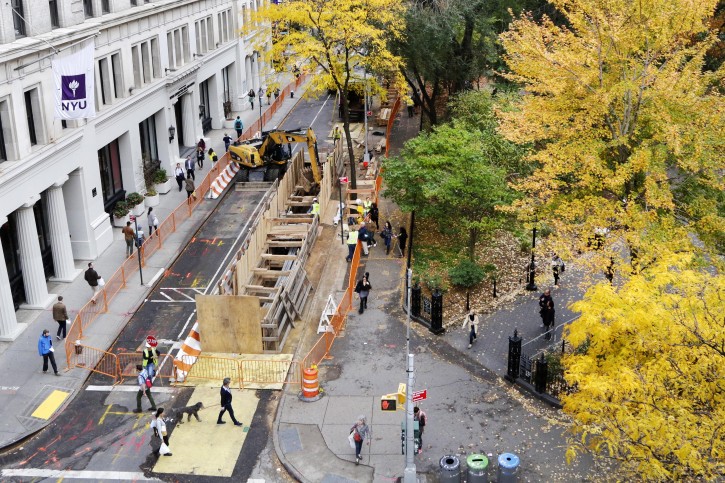
New York – Two centuries-old burial vaults discovered beneath a street in the heart of New York University’s campus by workers replacing a water main were likely part of a Presbyterian church cemetery, an archaeologist said Thursday.
One of the roughly 15-by-18-foot crypts was clearly disturbed, with the skeletons and skulls of between nine and 12 people pushed into a corner while more than a dozen stacked wooden coffins can be seen in the second one, said Chrysalis’ Alyssa Loorya, the project’s principal investigator.
“You never know what you can find beneath the city’s streets,” she said at the site in Manhattan’s Greenwich Village neighborhood. “You bury people to memorialize them and these people were forgotten.”
Anthropologists and archeologists have hung lights in the excavated area and will use digital cameras with zoom lenses to take pictures of the coffin plates in the hopes of identifying the buried. And because New York City policy is to leave burial grounds undisturbed if possible, project engineers are planning a new route for the water main.
“We knew we could be encountering remains or other items in this area,” said Thomas Foley, an associate commissioner with the city’s Department of Design and Construction. “We’ll do some exploring to discover what other lanes we might have.”
Loorya’s firm was contracted to work on the three-year, $9 million project because Washington Square Park adjacent to the excavation work was a Potter’s Field for yellow fever victims in the early 1800s, officials said. The tombs’ brick roofs were discovered Tuesday by workers just 3 ½ feet under the street with utility cables running on top of them.
The vaults were probably built in the late 18th century or early 19th century and belonged to one of two area Presbyterian churches, Loorya said. Members of her team will search old newspapers, death records and church archives to identify the buried — if possible.
The discovery is not the first time officials have discovered historical artifacts in the course of planned upkeep projects to replace old pipes and water mains.
Eighteenth century houses and wells along with Revolutionary War buttons worn by soldiers who marched in the Battle of Brooklyn were found during construction work beginning in 2005 in lower Manhattan’s South Street Seaport area, Loorya said.
“It’s definitely a wonderful find,” she said.
As reported by Vos Iz Neias
